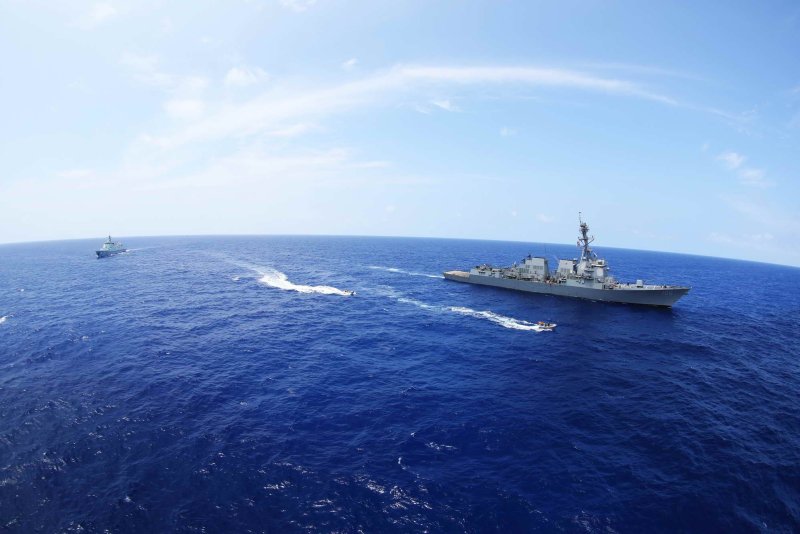Feb. 24 (UPI) — New Zealand Defense Minister Judith Collins said Monday that a Chinese naval group conducting military exercises in the Tasman Sea was armed with “extremely capable” weaponry with the ability to target mainland Australia.
Calling the minimal advance warning provided by Chinese authorities of two so-called live-fire exercises by the People’s Liberation Army warships southeast of Australia on Friday and Saturday “unusual“, Collins said the presence of such a powerful naval force was an omen of the need for New Zealand to ramp up defense spending amid rising strategic rivalry in the region.
“We’ve certainly never seen a task group of this capability undertaking this sort of work, it’s certainly a change,” she said of the incident which forced the last-minute diversions of at least three flights in the area.
“The weapons they have are extremely capable. One has 112 vertical launch cells and has reported anti-ship ballistic missile range of 540 nautical miles,” said Collins, who added that the battle group was now 280 miles east of Tasmania and being shadowed by the New Zealand Navy frigate Te Kaha.
Collins said that as far as she was aware the Jiangkai-class frigate, Hengyang, Renhai-class cruiser Zunyi and Fuchi-class supply vessel Weishanhu that made up Taskgroup 107 were conventional non-nuclear powered ships that were not carrying nuclear weapons or missiles capable of being armed with a nuclear warhead.
However, she expressed frustration that Chinese authorities were rejecting information requests regarding the movements of the warships.
Collins said that meant they were left with no alternative but to accept that the warships were engaged in “normal transits” of waters in the region in line with the U.N. Convention on the Law of the Sea rules and were not violating international law.
China’s defense ministry complained that both New Zealand and Australia had purposely exaggerated the actions of its navy, insisting that they were perfectly legal.
“Australia, knowing this well, made unreasonable accusations against China and deliberately hyped it up,” said Chinese defense ministry spokesman Wu Qian. “We are deeply surprised and strongly dissatisfied with this.”
The Chinese navy did inform the Australian Defense Department on Friday ahead of the drills but Collins rejected claims by the Chinese Ambassador to New Zealand, Wang Xiaolong, that the appropriate notice period was provided.
“There was a warning to civil aviation flights, that was basically a very short amount of notice, rather than what we would consider best practice which is 12-24 hours notice, so that aircraft don’t have to be diverted when they’re on the wing,” said Collins.
She warned New Zealand’s remote location on the globe was no longer adequate protection.
“We need to clearly step up our game,” she said.
The Te Kaha reported from international water 340 miles off Australia on Friday that the Chinese warships assumed a live-fire drill formation before positioning a target, maneuvering and then collecting the target from the water.
No live fire, including surface-to-air, was seen.
However, on Saturday, it reported live rounds fired from one of the ships.
The exercises were putting both countries on notice that China can project its military might well into South Pacific, according to analysts, while Collins suggested China might have its eye on vast mineral deposits beneath the ocean floor amid a deep sea mining deal it struck with the Cook Islands last week.
